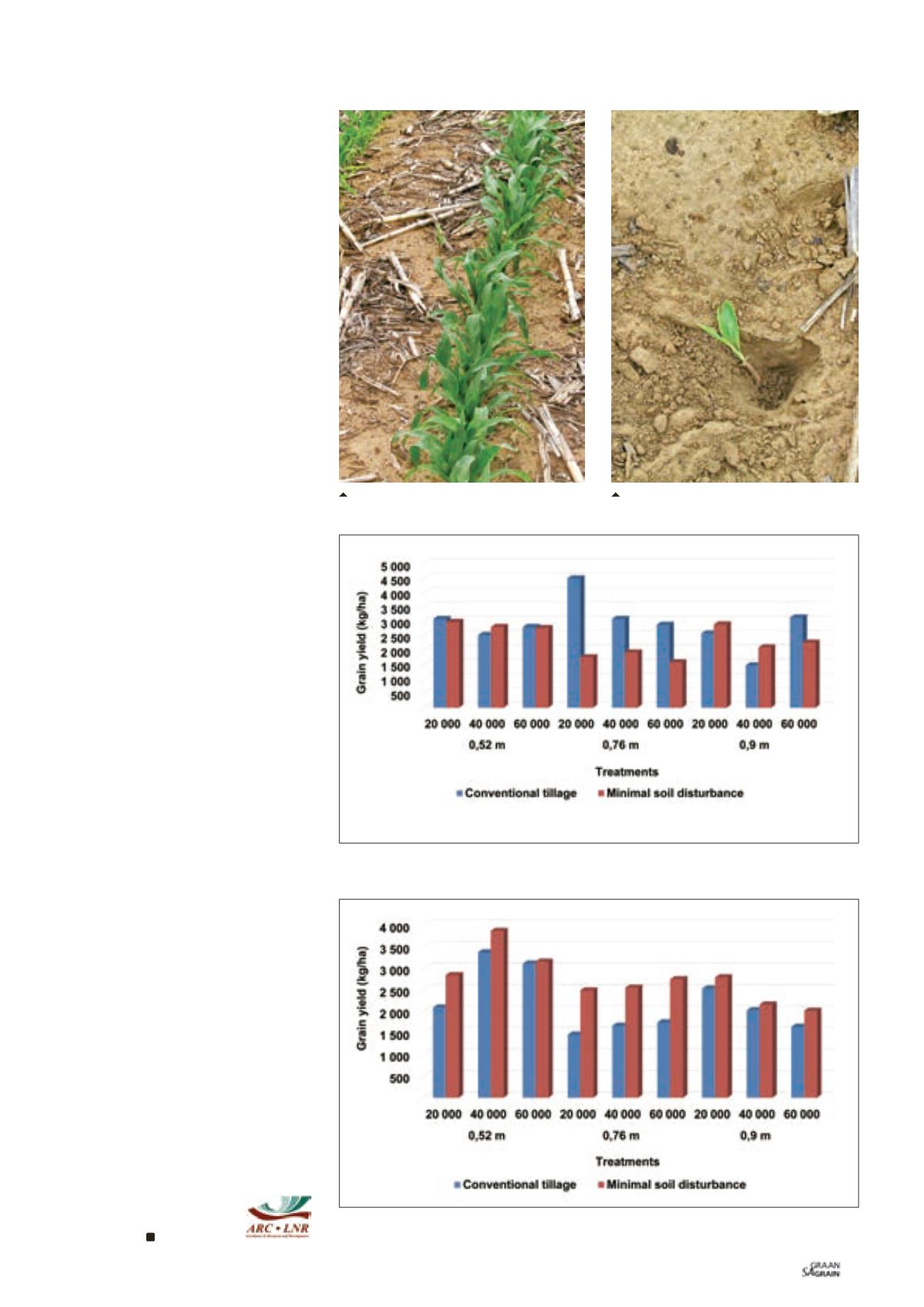
115
September 2014
Graph3b:Relationshipbetween rowspacingandplantdensityunder two tillagepracticesatViljoens-
kroon.
Graph 3a: Relationship between row spacing and plant density under two tillage practices at Buf-
felsvallei.
conventionally tilled plots (
Graph 1b
). This
yield increase ranged from 12% to 60%
across plant density. Earlier reports show
that there areno clear trends in thebenefits
of CA for only a few years of the system,
but there is in the long term.
Results of this trial are in support of those
findings as reported earlier, that the Vil-
joenskroon trial site was under CA for over
five years andnot at Buffelsvallei.
Row spacing
Using narrow row spacing did not com-
promise maize yields throughout the trials
and for both tillage practices at Buffels-
vallei, which is always the casewhenplants
areplantedclosely (
Graph2a
). For example,
both tillage practices resulted in similar
grain yield when rows are either narrowly
(0,52m)orwidely (0,90m) spaced.However,
yields almost doubled in conventionally
tilledplotswhenmaize rowswere spacedat
0,76m (Graph 2a).
The poor performance from reduced tillage
at Buffelsvallei can be attributed to damage
by guinea fowls (
Photo 3
) as there were
no stubble on the soil surface from the
previous crop, thus it was easy for the birds
to trace planting holes. The same was not
observed at theViljoenskroon trial site.
Planting maize with all spacing under
minimal soil disturbance resulted in higher
grain yield compared to the conventionally
tilled plots (
Graph 2b
). However, superior
yields were obtained when rows were
narrow (0,52 m), with yield increases of
about 34% compared to 21% (0,76 m) and
22% (0,90 m) relative to the conventionally
tilledplots (Graph 2b).
Selecting row spacing and
plant density
At Buffelsvallei, plantingmaize at narrower
spacing (0,52 m) in both tillage systems
gave comparable yields regardless of
plantingdensity (
Graph3a
). However,when
rows are spaced at 0,76 m, yields from
conventionally tilled plots were superior to
minimal soil disturbance across all plant
densities. On the contrary, conventionally
tilled plots gave higher yields only at the
highest plant density of 60 000 plants/ha
when rows are spaced at 0,90m (Graph 3a).
At Viljoenskroon, planting maize under
minimal soildisturbance resulted insuperior
yields regardless of the row spacing and
plant density (
Graph 3b
). Grain yields were
comparable only with maize planted at the
narrower spaced rows (0,52m) with a plant
populationof 60 000plants/ha.
Formore informationonmaize productivity
as influencedby row spacing
and plant population under
CA, contact Cedric Baloyi at
018 299 6100.
2: Aminimal soil disturbanceplot displaying
crop residueon the soil surface.
3: Showing theplantingholeof a seedling
damagedbyguinea fowl.


